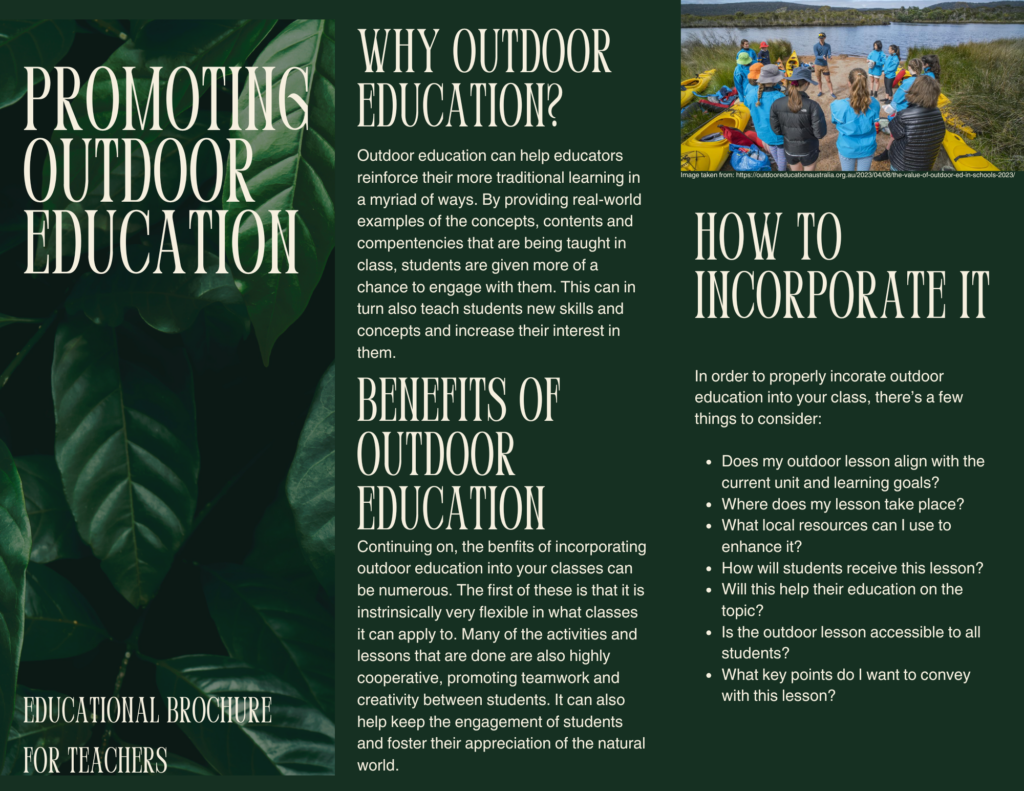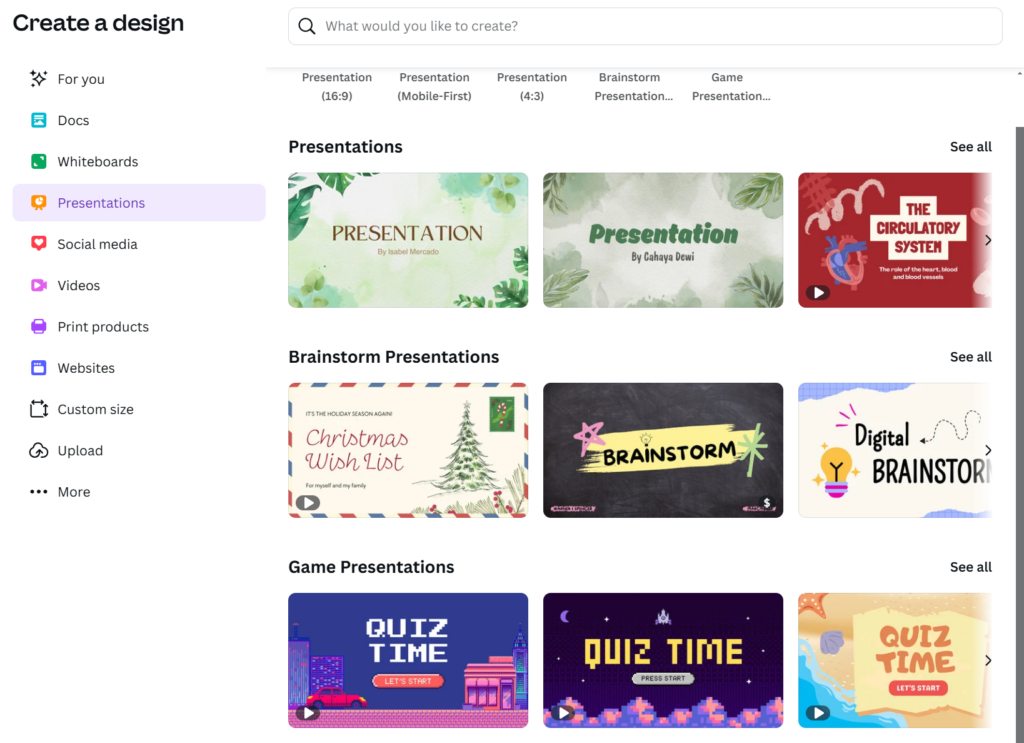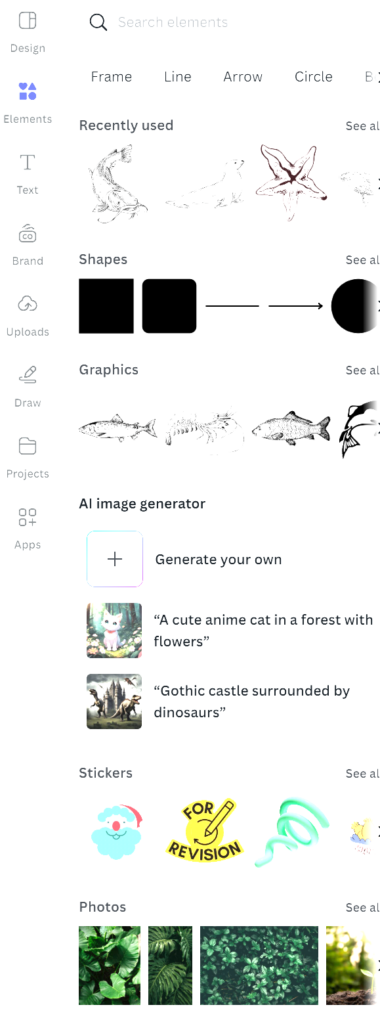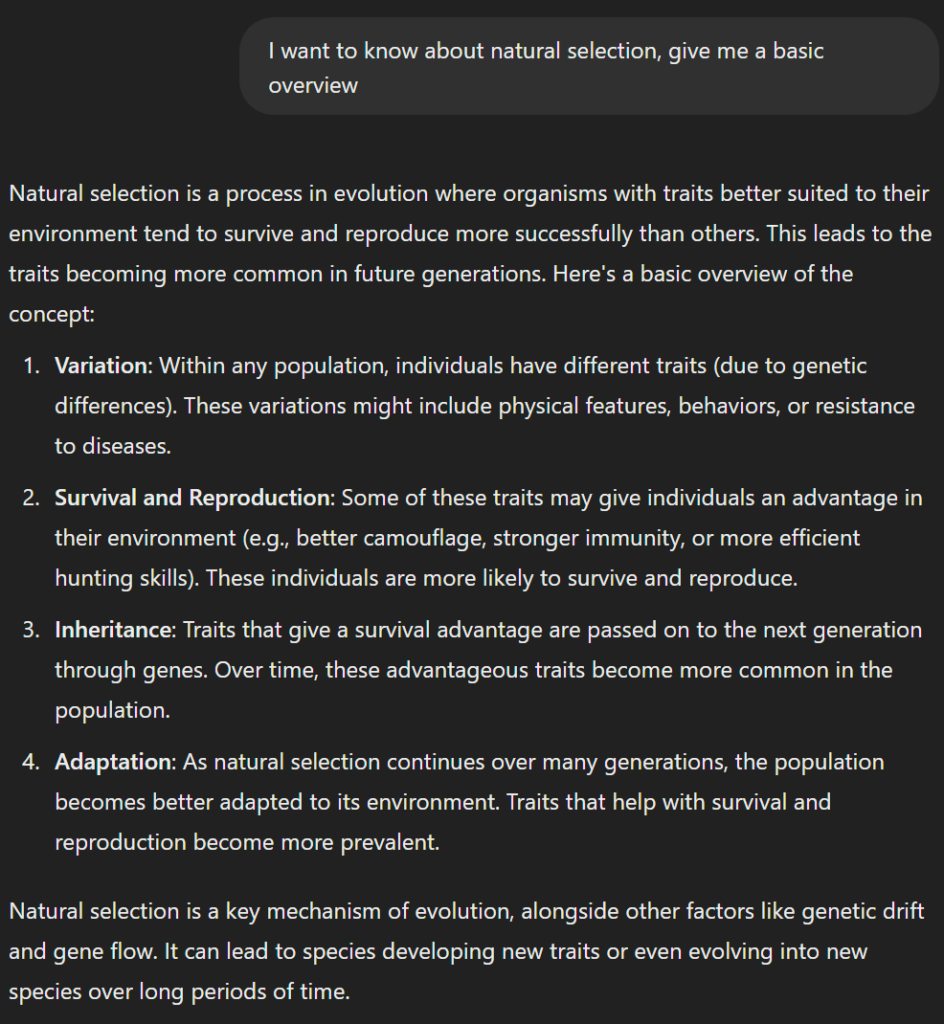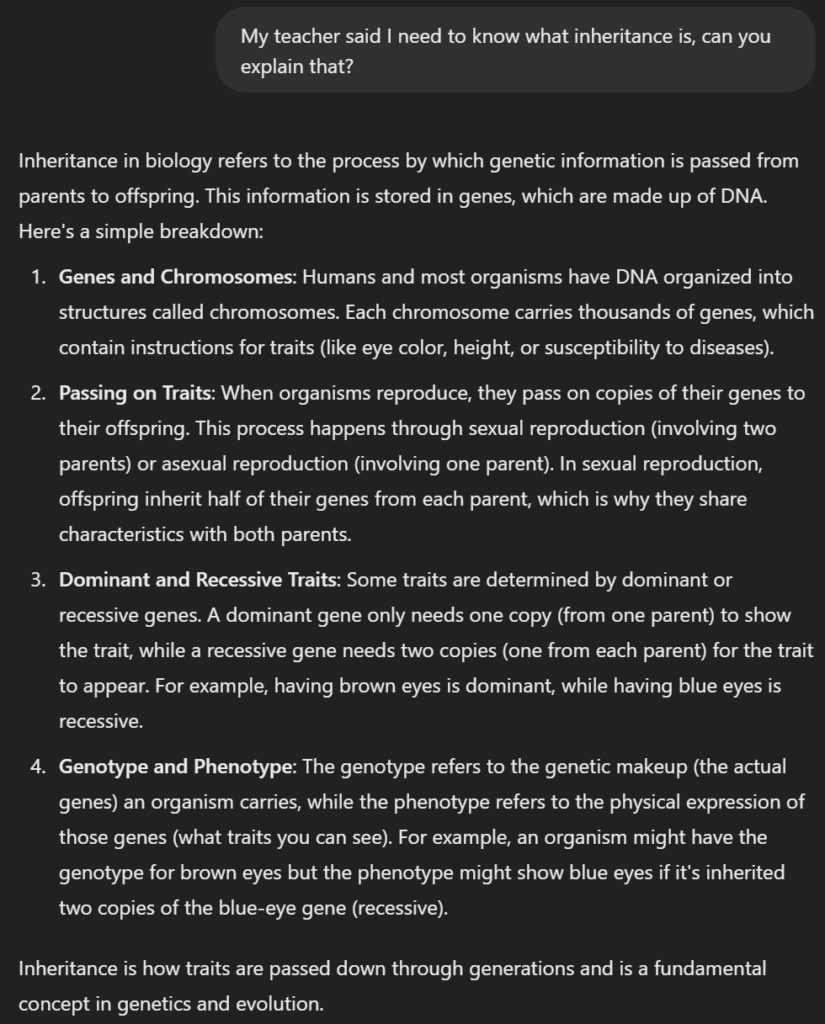Continuing on from my previous post on the uses of Generative AI for students, I want to swing more towards the various ways educators can leverage Gen AI to plan their classes, create materials, the finish off with some precautions to take when using these tools.
Beginning with using GenAI to create plans and lessons, I’m going to preface with stating that this should be used solely as a supplement to whatever other methods and resources one uses to plan, and must then be triple checked and cross-referenced. That being said however, GenAI can be extremely powerful in creating unit and lesson plans, and can even be specialized into a particular provinces curriculum. As an example, here is a response to a prompt I provided, asking it to create a lesson plan for a grade 10 science class on the conservation of mass.
Here’s the output for the prompt: “Create a grade 10 lesson plan using the BC curriculum for a science 10 class on the conservation of mass”:
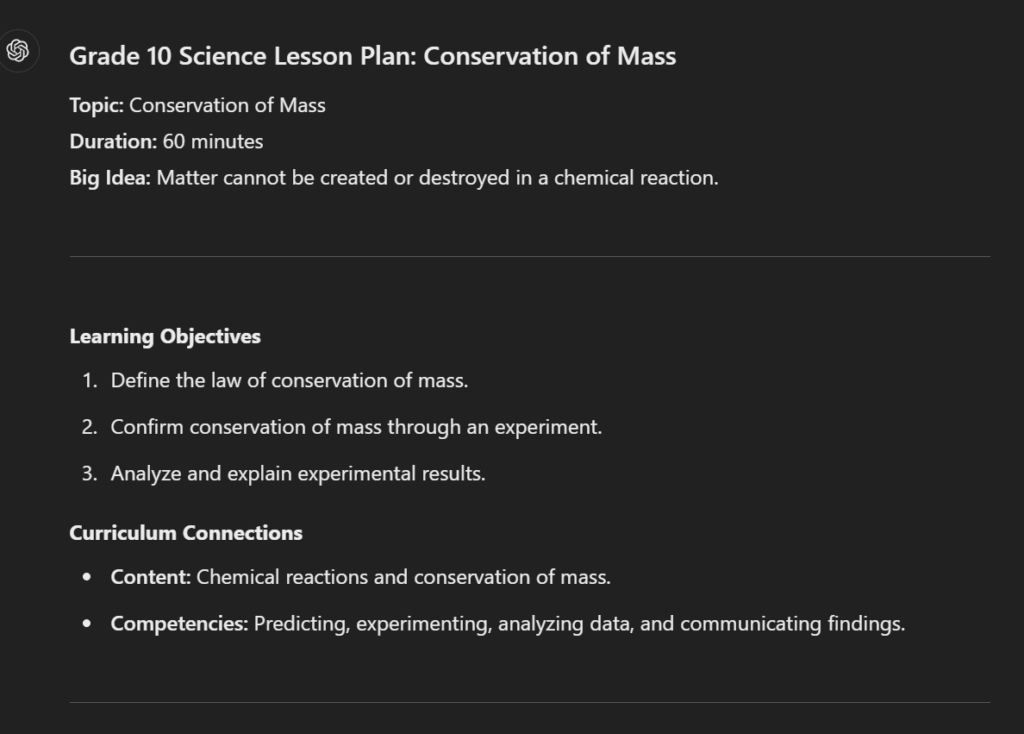
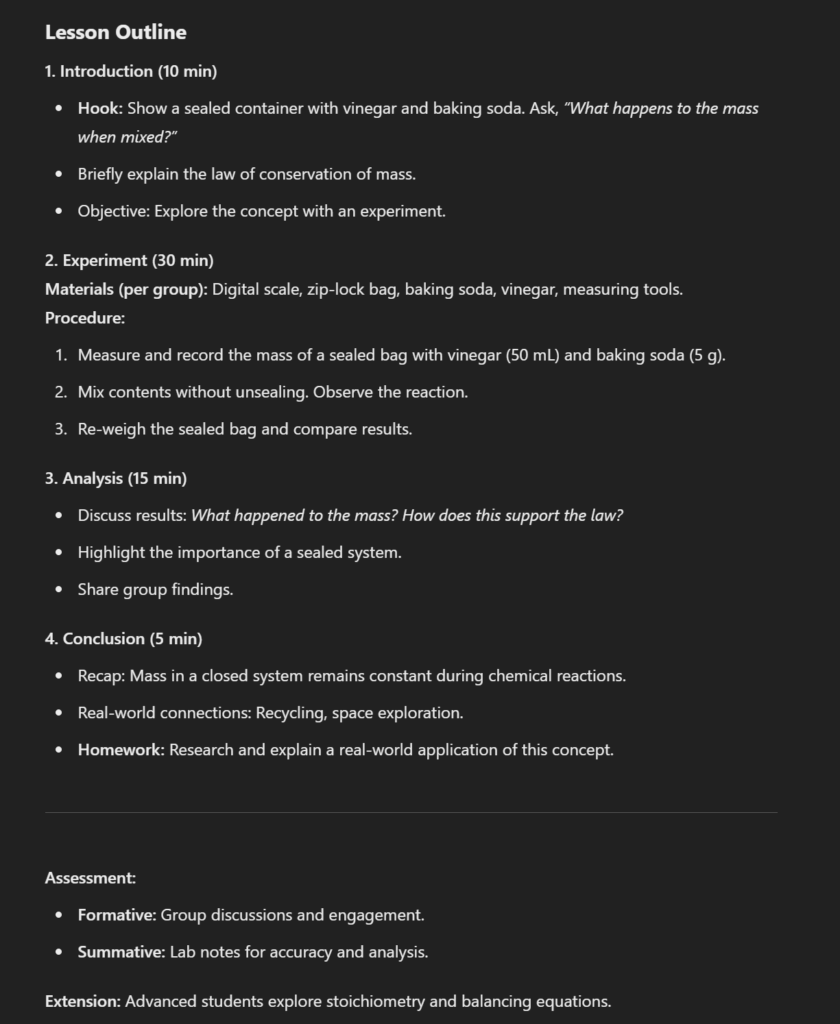
As we can see, it is actually surprisingly efficient and effective at creating these resources. But now lets talk about the precautions educators must take when using these resources:
First, and probably most obvious, comes the issue of incorrect information. These large language models are notorious for providing misleading or downright factually incorrect information, thus it is super important that one cross references the information it provides with known sources, lest you end up giving misleading lessons to your students.
Second, the overuse of these AI can be detrimental to your overall ability as an educator. Let me explain what I mean: Say you have a class of which you have been making the lessons by hand for multiple months, then suddenly shift to AI-generating your lessons, there will certainly be some discrepancies in the quality and content. Thus, it may create jarring transitions and you may not be able to create as cohesive or as encompassing of a unit plan.
Overall however, it can be incredibly useful of a resource for create such lesson plans, and even more useful in creating resources such as quizzes, sheetwork and the like. Moreover, it can be great for generating new ideas and overcoming writer’s block.
